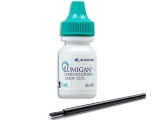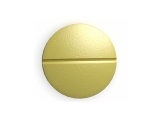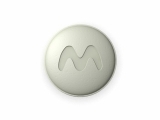Importance of micromeritics in pharmacy centres
Micromeritics plays a crucial role in the field of pharmacy centers, as it provides valuable information about the physical and chemical properties of pharmaceutical powders and particles. It allows pharmacists and researchers to understand the behavior of these materials, which is essential for the development and manufacturing of drugs. Micromeritics helps ensure the quality, safety, and efficacy of pharmaceutical products by enabling precise control over factors such as particle size, shape, surface area, and porosity.
One of the key benefits of using micromeritics in pharmacy centers is the ability to optimize drug formulation and delivery. By analyzing the particle size distribution of a drug, researchers can determine the most effective dosage form, whether it be a tablet, capsule, or suspension. This knowledge is critical in ensuring that the drug is effectively absorbed by the body and delivers the desired therapeutic effect. Micromeritics also aids in the development of controlled-release systems, where drug particles are modified to release the medication slowly over time.
In addition to formulation and delivery optimization, micromeritics is vital in the field of drug manufacturing. By monitoring and controlling the particle size and shape of active pharmaceutical ingredients (APIs) during the production process, pharmaceutical companies can ensure consistent drug quality and bioavailability. Micromeritics also facilitates the development of novel drug delivery systems, such as inhalers and transdermal patches, by providing insights into particle behavior and drug-particle interactions.
Furthermore, the characterization of excipients, which are the inactive ingredients used in drug formulations, is another significant application of micromeritics in pharmacy centers. Understanding the properties of excipient particles, such as their size, density, and flowability, allows formulation scientists to select the most suitable excipients for a particular drug. This knowledge aids in ensuring proper drug stability, dissolution, and bioavailability, ultimately enhancing the patient's experience and treatment outcomes.
The Importance of Micromeritics in Pharmacy Centers
Micromeritics, a branch of pharmaceutical science, plays a significant role in pharmacy centers. With the advancement in technology, it has become crucial to have a sophisticated understanding of micromeritics to ensure the quality and effectiveness of pharmaceutical products.
Particle Size Analysis: Micromeritics involves the measurement and analysis of particle size, which is a critical parameter in the development and production of pharmaceuticals. The size of particles can impact the dissolution rate, bioavailability, and stability of drugs. By conducting particle size analysis, pharmacy centers can ensure consistent and uniform dosage forms, enabling proper drug delivery to patients.
Surface Area Measurement: The surface area of particles is another important parameter in micromeritics. The surface area directly affects the rate of dissolution, absorption, and reaction of drugs in the body. By accurately measuring the surface area, pharmacy centers can determine the efficiency of drug absorption, leading to more effective and targeted treatment.
Powder Flow Properties: Micromeritics also involves studying the flow properties of powders. Good flow characteristics are essential in the manufacturing process of various dosage forms, such as tablets, capsules, and powders. By understanding the flow behavior of powders, pharmacy centers can ensure efficient and consistent production, minimizing defects and variations in the final product.
Quality Control: Micromeritics plays a vital role in quality control in pharmacy centers. By performing various tests and measurements, such as particle size analysis and surface area measurement, pharmacy centers can ensure that the pharmaceutical products meet the required specifications and standards. This helps in maintaining the efficacy, safety, and integrity of the drugs, ensuring patient satisfaction and confidence.
Research and Development: Micromeritics also contributes to research and development in the pharmaceutical industry. By studying the micromeritic properties of different drug compounds, researchers can gain insights into their behavior, performance, and interactions. This knowledge can then be utilized to develop new drug formulations, improve drug delivery systems, and enhance overall drug effectiveness.
In conclusion, micromeritics is of utmost importance in pharmacy centers. It enables the measurement and analysis of particle size, surface area, and powder flow properties, ensuring the quality, effectiveness, and consistency of pharmaceutical products. Additionally, micromeritics plays a critical role in quality control and research and development, contributing to the advancement of the pharmaceutical industry.
Understanding Drug Formulation
In the field of pharmacy, drug formulation plays a crucial role in the development and production of medications. Drug formulation refers to the process of designing and creating a drug product that is safe, effective, and appropriate for use in patients. It involves various factors, such as the selection of active pharmaceutical ingredients (APIs), excipients, and the overall dosage form.
Active pharmaceutical ingredients (APIs) are the substances in a drug formulation that have pharmacological activity and provide therapeutic benefits. They are carefully selected based on their intended therapeutic effect and should be of high quality and purity. The interaction between APIs and other components in the formulation is critical in determining drug stability, bioavailability, and overall effectiveness.
Excipients play a crucial role in drug formulation as they are the inactive substances that help deliver the active drug to the patient. Excipients can enhance the stability, solubility, and bioavailability of the drug, as well as control its release. They can also improve the taste, appearance, and texture of the final product. Common excipients include fillers, binders, disintegrants, lubricants, and preservatives.
Dosage Form
The dosage form refers to the physical form in which a drug is presented for administration. It can vary from tablets and capsules to creams, ointments, and injectables. The choice of dosage form depends on various factors, including the route of administration, patient preferences, and the desired therapeutic effect. Each dosage form has its own specific requirements in terms of formulation and manufacturing processes.
Tablets are solid dosage forms that are prepared by compressing a mixture of APIs and excipients. They are widely used due to their convenience, ease of administration, and stability. Tablet formulations can be modified to control drug release, such as immediate-release, extended-release, or enteric-coated tablets.
Capsules are another common dosage form that consists of a gelatinous shell filled with solid or liquid drug formulations. They are available in various sizes and can be made up of different materials, such as vegetarian capsules made from cellulose. Capsules allow for accurate dosage and easy swallowing.
Injectables are drug formulations that are administered directly into the body through a syringe or needle. They are sterile and require precise formulation and manufacturing processes to ensure safety and efficacy. Injectable formulations can be in the form of solutions, suspensions, or powders for reconstitution.
Creams and ointments are topical dosage forms that are applied to the skin for localized treatment. They are composed of a combination of APIs, excipients, and a base, which can be oil-based or water-based. Creams are easier to spread and absorb quickly, while ointments are thicker and provide longer-lasting effects.
In conclusion, understanding drug formulation is crucial in the field of pharmacy as it ensures the development of safe and effective medications. The selection of APIs, excipients, and dosage forms plays a significant role in determining the drug's efficacy, stability, and overall patient experience. By considering these factors, pharmacists and pharmaceutical scientists can create optimized drug formulations that meet the specific needs of patients.
Ensuring Proper Drug Dispensing
Proper drug dispensing is of utmost importance in pharmacy centers. It involves the accurate measurement and packaging of medications for patients. Micromeritics plays a significant role in ensuring the proper dispensing of drugs.
Accurate measurement
One of the key aspects of proper drug dispensing is accurate measurement. Micromeritics allows pharmacy centers to measure the precise quantity of medications required for each patient. This ensures that patients receive the correct dosage and reduces the risk of under- or over-dosing.
Packaging and labeling
Another crucial aspect of drug dispensing is appropriate packaging and labeling. Micromeritics helps pharmacy centers to package medications in containers of the appropriate size, ensuring that the dosage remains intact and protected. Additionally, precise measurements allow for accurate labeling of medications, providing patients with clear instructions on how to take their medications.
Error reduction
Micromeritics also plays a significant role in reducing errors in drug dispensing. By providing precise measurements, pharmacy centers can avoid mistakes that may occur during the dispensement process. This helps to enhance patient safety and decrease the risk of adverse reactions.
In summary, micromeritics is essential in ensuring proper drug dispensing in pharmacy centers. It enables accurate measurement, appropriate packaging and labeling, and error reduction. By implementing micromeritics techniques, pharmacy centers can provide patients with the medications they need in the correct dosage, enhancing the overall quality of care and patient outcomes.
Assessing Drug Stability
Drug stability is a critical factor in pharmaceutical centers as it determines the effectiveness and safety of the medications being produced. Assessing the stability of drugs involves various tests and measures to ensure that they maintain their quality and potency throughout their shelf-life.
One commonly used method for assessing drug stability is accelerated stability testing. This involves subjecting the pharmaceutical product to extreme conditions, such as high temperatures and humidity, to simulate the aging process. By monitoring the drug's physical and chemical properties, such as dissolution rate and degradation rate, during this accelerated aging, scientists can predict how the drug will behave over time.
Another important aspect of assessing drug stability is packaging evaluation. The choice of packaging material plays a crucial role in maintaining the stability of the drug. Certain materials, such as glass or aluminum, can provide better protection against light, moisture, and oxygen, which can degrade the drug. Packaging evaluation also includes assessing the seal integrity to ensure that the drugs are well-protected from external factors.
Microbial stability testing is another vital step in assessing drug stability. This test determines the susceptibility of the drug to microbial contamination, which can lead to product deterioration and pose a risk to patient safety. It involves exposing the drug to a range of microorganisms and monitoring for any signs of contamination, such as changes in color, odor, or visible growth.
Overall, assessing drug stability is crucial in ensuring the quality and effectiveness of pharmaceutical products. By conducting comprehensive stability tests and evaluations, pharmacy centers can ensure that the medications they produce are safe, potent, and maintain their quality over time.
Improving Bioavailability
The concept of bioavailability plays a crucial role in the effectiveness of pharmaceutical drugs. Bioavailability refers to the extent and rate at which an active ingredient is absorbed and becomes available in the bloodstream. It is directly linked to the therapeutic outcome and pharmacological response of the drug.
Particle Size Distribution
One way to improve bioavailability is by controlling the particle size distribution of the drug. The size of drug particles can significantly impact their dissolution rate and subsequent absorption. Smaller particles tend to have a larger surface area, which allows for faster and more efficient dissolution in the gastrointestinal tract. By reducing particle size through micromeritics techniques, such as milling or micronization, the drug can be formulated in a way that enhances its dissolution and ultimately improves bioavailability.
Amorphous Formulation
In certain cases, amorphous formulations of drugs can also be used to improve bioavailability. Amorphous drugs have a disordered molecular structure, which allows for increased solubility and faster dissolution compared to their crystalline counterparts. Micromeritics techniques can be employed to transform a drug from its crystalline form into an amorphous form, thereby enhancing its bioavailability.
Solid Dispersions
Solid dispersions are another approach to improving bioavailability. They involve the incorporation of a drug into a suitable carrier matrix, such as a polymer, to enhance its solubility and dissolution rate. Micromeritics techniques can be utilized to prepare solid dispersions with a uniform distribution of drug particles in the carrier matrix, ensuring consistent drug release and improved bioavailability.
In conclusion, micromeritics techniques play a significant role in improving bioavailability in pharmacy centers. By controlling particle size, utilizing amorphous formulations, and preparing solid dispersions, pharmaceutical scientists can enhance the dissolution and absorption of drugs, leading to improved therapeutic outcomes for patients.
Enhancing Drug Delivery Systems
Enhancing drug delivery systems is a crucial aspect of pharmaceutical development. By improving the methods and techniques used to administer drugs, we can enhance their efficacy, efficiency, and safety.
One approach to enhancing drug delivery systems is through the use of nanotechnology. Nanoparticles can be utilized to encapsulate drugs, allowing for targeted delivery to specific sites within the body. This targeted delivery can increase the concentration of the drug at the desired site, while minimizing its exposure to other tissues and organs.
Another strategy for enhancing drug delivery systems is through the use of controlled-release formulations. These formulations allow for the gradual release of drugs over a prolonged period of time, ensuring a steady and sustained therapeutic effect. This can be particularly beneficial for drugs that require frequent dosing or have a short half-life.
In addition to nanotechnology and controlled-release formulations, advances in micromeritics can also contribute to enhancing drug delivery systems. Micromeritics involves the measurement and characterization of the physical properties of particles, such as size, shape, and surface area. By understanding these properties, pharmaceutical scientists can optimize drug formulations and improve their performance.
Enhancing drug delivery systems is an ongoing area of research and development in the field of pharmacy. It holds great promise for improving patient outcomes and addressing some of the challenges associated with traditional drug delivery methods. Through the application of nanotechnology, controlled-release formulations, and micromeritics, pharmaceutical scientists are working towards the development of more effective and efficient drug delivery systems.
Optimizing Quality Control in Pharmaceutical Manufacturing
In the field of pharmaceutical manufacturing, quality control plays a crucial role in ensuring the safety, efficacy, and consistency of medications. It involves monitoring and testing various parameters throughout the manufacturing process to ensure that the final product meets all quality standards and regulatory requirements. Effective quality control practices not only help to identify and prevent defects, but also contribute to the overall optimization of the manufacturing process.
Implementing standardized testing protocols: Standardization is key to optimizing quality control in pharmaceutical manufacturing. By implementing and following standardized testing protocols, manufacturers can ensure consistent and reliable results. These protocols outline the specific tests to be performed, the equipment and methods to be used, and the acceptance criteria for each parameter. Following standardized protocols improves the efficiency of quality control processes and reduces the risk of errors or variations.
Utilizing advanced analytical techniques: The use of advanced analytical techniques can greatly enhance the quality control process in pharmaceutical manufacturing. Techniques such as high-performance liquid chromatography (HPLC), gas chromatography (GC), and mass spectrometry provide accurate and precise measurements of various drug components, impurities, and contaminants. These techniques enable manufacturers to detect and quantify even trace amounts of impurities or deviations from specifications, ensuring the highest level of quality and safety in the final product.
Implementing real-time monitoring: Real-time monitoring systems can significantly improve the efficiency and effectiveness of quality control in pharmaceutical manufacturing. By continuously monitoring critical parameters such as temperature, humidity, pressure, and airflow, manufacturers can quickly detect and address any deviations or abnormalities in the manufacturing process. Real-time monitoring allows for immediate corrective measures, reducing the risk of producing substandard or non-compliant products.
Investing in automated quality control systems: Automation technology has revolutionized the pharmaceutical industry, and its application in quality control is no exception. Automated systems can streamline and optimize quality control processes by reducing human error and increasing efficiency. From automated sampling and testing to data recording and analysis, these systems can perform tasks with greater precision and speed, ensuring accurate and reliable results. Investing in automated quality control systems not only improves product quality, but also saves time and resources.
Continuous training and education: Ongoing training and education are essential for optimizing quality control in pharmaceutical manufacturing. Manufacturers should provide regular training programs to ensure that employees are knowledgeable about current quality control practices, regulatory requirements, and any new technologies or techniques. By investing in the professional development of their workforce, manufacturers can foster a culture of quality and continuous improvement, resulting in consistently high-quality pharmaceutical products.
In conclusion, optimizing quality control in pharmaceutical manufacturing is crucial for ensuring the safety, efficacy, and consistency of medications. By implementing standardized testing protocols, utilizing advanced analytical techniques, implementing real-time monitoring, investing in automated quality control systems, and providing continuous training and education, manufacturers can enhance the efficiency and effectiveness of their quality control processes, leading to the production of high-quality pharmaceutical products.
Follow us on Twitter @Pharmaceuticals #Pharmacy
Subscribe on YouTube @PharmaceuticalsYouTube




Be the first to comment on "Importance of micromeritics in pharmacy centres"